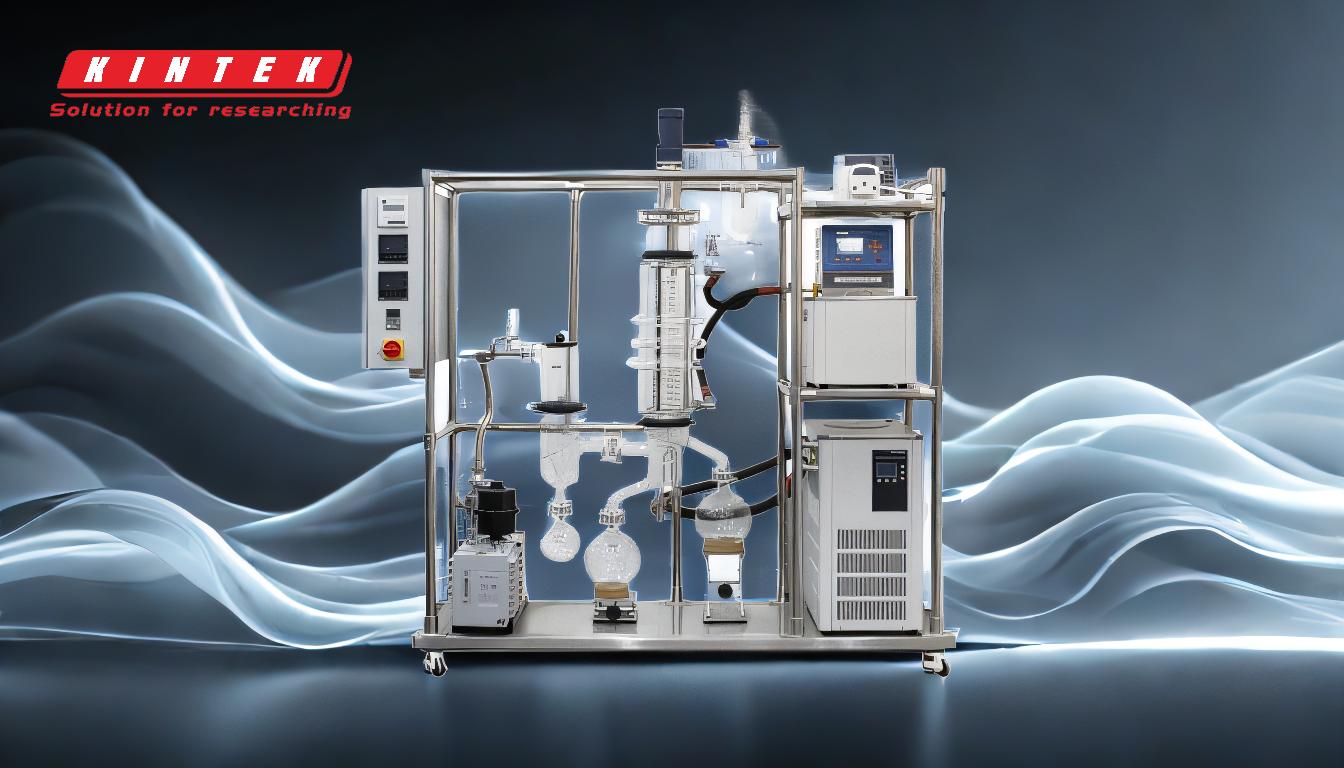Distillation is a widely used process for separating components of a liquid mixture based on their different boiling points. The process involves heating the mixture to vaporize the component with the lower boiling point, cooling the vapor to condense it back into a liquid, and collecting the purified component. The main steps include setting up the distillation apparatus, heating the mixture, controlling the temperature and stirring, collecting the distillate, and safely concluding the process. Proper setup and monitoring are crucial to ensure efficiency and safety.
Key Points Explained:

-
Setup of the Distillation Apparatus:
- Secure Connections: Ensure all connections in the distillation setup are secure to prevent leaks or accidents. This includes checking the boiling flask, condenser, and collection flask.
- Insulation: If using insulation rope, wrap it around the boiling flask and the bottom quarter of the distillation head, leaving the Vigreux column visible for observation.
- Airflow Control: Close the valve on the manifold to allow proper airflow. This ensures the system is sealed and ready for heating.
-
Heating the Mixture:
- Initial Heating: Begin by heating the mixture to around 60°C and setting the stirring speed to approximately 200 RPM. This initial temperature is often sufficient to start the vaporization of the lower boiling point component.
- Temperature Adjustment: If using an analog heating mantle, set the heating knob to the middle position. If no reaction occurs, slightly increase the temperature by moving the knob past the halfway position until vaporization begins.
-
Monitoring and Adjusting the Process:
- Observation: Continuously monitor the reaction and the flow of distillate. The Vigreux column should remain visible to observe the progress.
- Stirring Adjustments: As the fluid level decreases, increase the stirring speed to 900-1000+ RPM to maintain efficient mixing and prevent localized overheating.
- Temperature Control: If the reaction subsides, increase the temperature by an additional 10 degrees to ensure complete vaporization of the desired component.
-
Collecting the Distillate:
- Condensation: The vaporized component travels through the condenser, where it is cooled and condensed back into a liquid.
- Collection: The condensed liquid is collected in a separate flask. This is the purified component with the lower boiling point.
-
Concluding the Distillation:
- Stopping the Process: Once the reaction stops and no more distillate is flowing, turn off the heat, stop the stirrer, and turn off the vacuum pump.
- System Depressurization: Open the valve to allow the atmosphere into the system, ensuring it is safe to disassemble the apparatus.
-
Safety and Efficiency Considerations:
- Temperature Monitoring: Accurate temperature control is essential to prevent overheating or underheating, which can affect the purity of the distillate.
- Stirring Speed: Proper stirring ensures uniform heating and prevents the mixture from boiling too vigorously, which could lead to splashing or uneven distillation.
- System Integrity: Regularly check the system for leaks or malfunctions to maintain safety and efficiency throughout the process.
By following these steps, distillation can be effectively used to separate and purify components of a liquid mixture. Proper setup, monitoring, and control are key to achieving high-quality results.
Summary Table:
| Step | Key Actions |
|---|---|
| Setup | Secure connections, insulate the flask, and control airflow. |
| Heating | Start at 60°C, adjust temperature, and maintain stirring at 200 RPM. |
| Monitoring | Observe distillate flow, increase stirring to 900-1000 RPM, and adjust heat. |
| Collecting Distillate | Cool vapor in the condenser and collect purified liquid in a separate flask. |
| Concluding Process | Turn off heat, stirrer, and vacuum pump; depressurize the system. |
| Safety & Efficiency | Monitor temperature, stirring speed, and system integrity for optimal results. |
Need help setting up your distillation process? Contact our experts today for personalized guidance!









